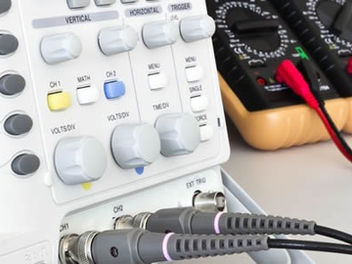How Often Should A Fire Extinguisher Be Serviced?
- Guy hudson
- Sep 25, 2023
- 4 min read
Fire safety is a paramount concern in any environment, whether it's a workplace, a public facility, or even your own home. Fire extinguishers play a crucial role in mitigating fire-related risks, providing a first line of defence when fires break out. However, just having a fire extinguisher isn't enough; regular servicing and maintenance are essential to ensure they function as intended during emergencies. In this article, we'll delve into the importance of fire safety, the inner workings of fire extinguishers, and the critical question: How often should a fire extinguisher be serviced?
Understanding the Importance of Fire Safety
Before we explore fire extinguisher servicing in detail, let's emphasise the significance of fire safety. Fires can be devastating, causing damage to property, injury, and even loss of life. Fire prevention and rapid response are vital components of any safety strategy. Fire extinguishers serve as valuable tools that can help control small fires, preventing them from escalating into major disasters.
How Fire Extinguishers Work
Fire extinguishers operate on the principle of removing one or more elements of the fire triangle—heat, fuel, and oxygen—to extinguish a fire. They typically contain a fire-suppressing agent under pressure. When the extinguisher's valve is opened, the agent is released in a controlled manner, smothering the fire and cooling the flames.
Key Components of a Fire Extinguisher
Understanding the basic components of a fire extinguisher is essential for knowing how to maintain and service them properly:
Cylinder: The outer shell that holds the fire suppressant agent under pressure.
Valve: The control mechanism that regulates the release of the agent.
Pressure Gauge: Indicates the pressure level inside the extinguisher.
Nozzle or Horn: The discharge outlet that directs the agent toward the fire.
Safety Pin: Prevents accidental discharge.
Handle: Provides a grip for operating the extinguisher.
Now that we have a fundamental understanding of fire extinguishers, let's explore the factors that influence the servicing schedule.
Factors Influencing the Servicing Schedule
Fire extinguisher servicing isn't a one-size-fits-all approach. Various factors significantly influence the schedule for inspecting, maintaining, and servicing these essential safety devices. Here are six key factors to consider:
1. Environmental Conditions: The environment in which the fire extinguisher is located can affect its condition. Harsh environments with temperature extremes or exposure to corrosive materials may require more frequent servicing.
2. Fire Extinguisher Type: Different types of fire extinguishers (e.g., water-based, foam, CO2) have varying service requirements based on their suppressant agent and intended use.
3. Workplace Hazards: The nature of the workplace and the potential fire hazards present can impact servicing needs. High-risk environments may necessitate more frequent checks and maintenance.
4. Legal Regulations: Compliance with local and national fire safety regulations is a legal requirement. These regulations often specify the minimum servicing and inspection intervals based on the type and location of extinguishers.
5. Budget Considerations: Budget constraints may influence how often you can service fire extinguishers. While it's important to prioritise safety, budget limitations can impact the frequency of service.
6. Manufacturer Recommendations: Fire extinguisher manufacturers provide guidelines on servicing intervals. Adhering to these recommendations ensures the equipment's reliability.
Understanding these factors is crucial, but what exactly are the common service intervals you should follow?
Common Fire Extinguisher Service Intervals
Maintaining fire extinguishers at the right intervals is essential to ensure they function effectively when needed. Here are seven common service intervals that you should be aware of:
1. Monthly Inspections: Basic service, including visual inspections, should be conducted monthly. During these inspections, the following aspects should be checked:
Extinguisher is in its designated location.
No visible signs of damage or tampering.
Pressure gauge reading is within the specified range.
Safety pin and tamper seal are intact.
The nozzle and hose are free from obstructions.
2. Quarterly Servicing: This involves more thorough inspections by a trained technician. They will check for any issues that may not be apparent during monthly visual inspections.
3. Annual Maintenance: Once a year, fire extinguishers require a comprehensive inspection and servicing by a certified technician. This includes verifying the pressure, ensuring all components are in working order, and refilling or recharging the extinguisher as needed.
4. 5-Year Hydrostatic Testing: Every five years, some types of fire extinguishers need to undergo hydrostatic testing to ensure the integrity of the cylinder. This test involves filling the extinguisher with water or another test liquid and checking for leaks or weaknesses.
5. 6-Year Maintenance: In addition to the 5-year hydrostatic test, fire extinguishers require maintenance at this interval, which may involve internal inspections, component replacements, or refilling.
6. 12-Year Hydrostatic Testing: Similar to the 5-year test, this test is more extensive and performed every 12 years to ensure the continued safety and reliability of the extinguisher.
7. Manufacturer-Recommended Intervals: Different manufacturers may have specific recommendations for servicing their extinguishers. It's essential to follow these guidelines to maintain the warranty and safety of the equipment.
Conclusion
In conclusion, the regular servicing of fire extinguishers is not just a best practice; it's a legal requirement and a fundamental aspect of fire safety. By understanding the factors that influence servicing schedules and adhering to common service intervals, you can ensure that your fire extinguishers are ready to respond effectively in case of a fire emergency.
However, it's important to remember that fire safety is not just about equipment; it also involves safety training and preparedness. Ensure that your staff receives proper training in the correct use of fire extinguishers and that you have a robust fire safety plan in place.
Global Compliance UK is your trusted partner in electrical safety, with over 25 years of experience dedicated to ensuring your safety. Our comprehensive services are available nationwide, and we are trusted by leading schools, businesses, and agents. We offer competitive pricing without compromising quality.
For all your fire extinguisher servicing, maintenance, inspections, and safety training needs, contact Global Compliance UK at info@global-compliance.co.uk or call 0330 100 5341. Your safety is our priority.

























Comments